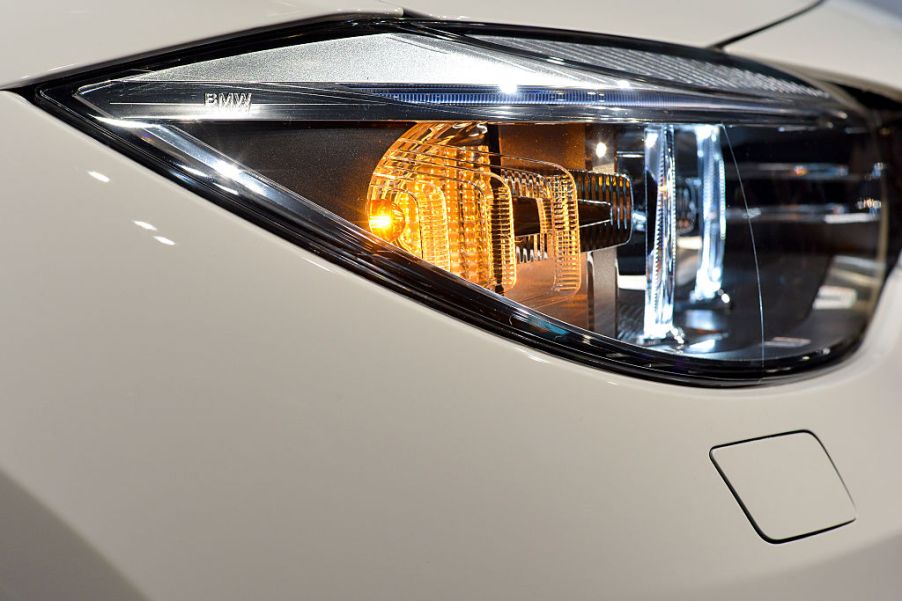
The History Behind Blinker Fluid
While not everybody enjoys a practical joke or prank, there are a number that make car maintenance novices the butt of the joke. A newbie that doesn’t have their whits about them could very well find themselves off hunting for an imaginary product all for a laugh. Blinker fluid is one of those prank products. Don’t fall for the joke. Educate yourself on the history of blinker fluid so the next time someone asks you if you’ll run into the store for them to grab some, you can tell them exactly why you won’t.
What is the blinker fluid joke?
Telling someone they need to get more blinker fluid is a joke played on those who don’t know much about car maintenance. It’s an easy prank to play considering how many different fluids vehicles really do need. For someone who doesn’t know any better, it would be easy to assume something like that might be real. Supporting the joke are blinker fluid coupons found online and “actual” blinker fluid. On Amazon, that real blinker fluid is just an empty bottle sold in the gag gift category. In reality, the blinker operates via an electrical system, which would be damaged by fluids.
The history of blinker fluid
The search for blinker fluid is part of a bigger class of jokes called “fool’s errands.” These pranks are generally played by the experienced group on a novice and often send that person off on an impossible search. A well-known version is the “snipe hunt.” The joke has been around for a number of years. Looking at Google Trends, which tracks back to 2004, searches for “blinker fluid” on Google started to rise in 2016 and hit their peak in April 2017. It started to appear on UrbanDictionary.com as far back as 2005.
Related car mechanic jokes include asking someone to get the left-handed wrench or left-handed screwdriver. Other requested fake products are a bucket of steam, a canooter valve, headlight fluid, and elbow grease. In a car dealership, a new hire might be sent looking for the lot stretcher. Muffler bearings are another imaginary car product. Since many car mechanics and auto parts stores are familiar with these car jokes, employees are sometimes willing to play along with the joke when someone comes in looking for one of these items.
How turn signals work
Blinkers, or turn signals, are an actual car part, even if they don’t use blinker fluid. When the driver pushes the turn signal lever in either direction, a circuit is closed, sending power to either the left or right front and rear turn signals. The power is sent in pulses to create the blinking lights of the turn signals. When the turn is completed and the driver turns the steering wheel back, the canceling cam catches the turn signal lever and turns off the blinking turn signals. The turn signal can also be deactivated by the driver.
What fluids your car actually needs
Unlike blinker fluid, there are a number of fluids a car needs that are real. Aside from gas, some of the main ones are engine oil, brake fluid, coolant or antifreeze, transmission fluid, and windshield washer fluid. Other fluids that really exist include differential and transfer case lubricants, power steering fluid, and air conditioning coolant. A diesel vehicle may also have diesel exhaust fluid too.
Most fluids do need to be replaced or topped off periodically. Engine oil helps lubricate the metal parts in the engine so it doesn’t overheat. Brake fluid is used to create pressure in the system, pressing the brake pads against the rotors and slowing the vehicle. Radiator coolant or antifreeze helps the radiator and engine block not overheat and also not freeze in the winter. Transmission fluid helps reduce heat and friction in the transmission. Windshield washer fluid squirts on the windows to clean them. Differential and transfer case lubricants are found in rear-wheel-drive, all-wheel-drive, and four-wheel-drive vehicles. Power steering fluid is a hydraulic oil that makes it easier to steer. Air conditioning coolant is a refrigerant used to cool the vehicle. Diesel exhaust fluid helps reduce pollution from diesel vehicles.
Don’t get tricked into searching for imaginary car products. Stick with shopping for the real fluids your vehicle actually needs.


